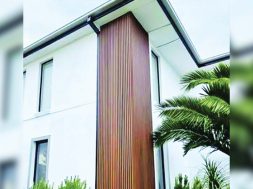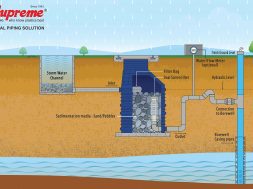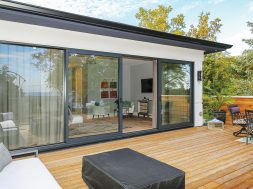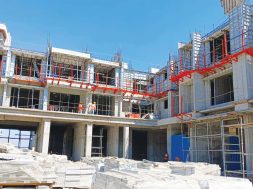Building a Super Connected Dream City

At MMRDA, we are executing projects worth more than one lakh crore in Maharashtra currently.

Can you please discuss the engineering marvel, the Trans Harbour Link of Mumbai?
In the history of Indian construction, the Mumbai trans harbour link is the longest sea bridge. If there is one project in India which can be compared to the circumference of the earth, the distance between the moon and the earth or other enduring aspects, it is this project. In terms of steel wires and rebar sizes, the amount used can go around the world, and the number of steel wires and rebar used can build 12 Eiffel towers. Each orthotropic steel deck being launched is about the size of six Boeing aircraft in size and weight. This has been on paper only for 60 years in history.
We are now at a stage where, thanks to the effort of the Indian government and the state government, we will be able to open it to the public by the end of next year, and this project will have a disruptive impact. Many challenges are associated with working on the high seas, which is why this project is essential to spur economic growth. We’re overcoming all challenges, and the team MMRDA is entirely up to the task.
As a part of the high-speed rail corridor from Ahemdabad to Pune via Mumbai, how will it surge the real estate prices for the areas surrounding the stations?
The high-speed rail corridor starts in BKC, the country’s financial hub. Afterwards, there was a proposal to extend it to Delhi on one side and Pune on the other. As a result,
transit-oriented development all around the belt along that train corridor will be affected. In terms of economic growth, this train corridor will have a huge ripple effect in terms of logistics and industrial hubs that can be established there. There will be a lot of jobs created as a result. As a result, you can say that it will spur the growth of growth centres all along the corridor, which means that it has a tremendous impact beyond transportation.
In MMRDA, we are executing projects worth more than one lakh crore in Maharashtra. This is the size of the projects we are looking at MTHL we just spoke about, a single project is about 20,000 crores, and we currently have about one lakh labourers working on our projects alone in Mumbai. These are the sizes, sizes, and complexity of the projects we discuss as we execute them.
How is MMRDA contributing to adding efficiency and road connectivity?
We are a planning authority as well as an executing authority. As a planning authority, we will do regional planning for the MMR region. Additionally, we are special planning authorities for different sectors in Mumbai and outside of Mumbai. As a result, we plan, we ensure that a proper master plan is prepared, especially in terms of
transport connectivity. The plan has just been revised for the next 20 years, we know what has to be done, the master plan is ready, and we have begun implementing it, which is about road connectivity. Secondly, we also execute projects; as I mentioned, the Trans Harbor Link is a part of this master plan. Several other tunnels are also being constructed right now. We are also constructing elevated roads, bridges, and several miscellaneous projects. As a result, these projects have the capacity, the impact, to reduce travel time and make people and industries more efficient. In addition, it will open up a lot of Interland for development, further impacting high rises, real estate prices, and the construction industry.
There are many discouraging opinions about the skyscraper culture developing on the coasts of Mumbai. What is your take on this?
As Mumbai is an island city, there is not much we can develop since it is constrained on all three sides by the sea. Skyscrapers are most efficient because they are not horizontally oriented. As a result, skyscrapers are more effective at reducing travel time than space. There is, however, a need to plan skyscrapers in such a way that layout planning is crucial for us because we can’t have pencil-like structures. As a second point, the safety and stability of the structures are critical. The problem is that historically, people have asked whether these structures are stable or not. But if you look at the data of the last 50 years, the structures that have fallen are low-rise structures. There are no examples of highrise structures falling, not even a handful, that I can find. Therefore, structurally, these are issues with low-rise, dilapidated buildings that keep collapsing.
There were some collapses this monsoon in Mumbai as well. And last year as well, so the list continues. Consequently, it is time to ensure three things are done: spatial
planning, structural stability, and infrastructure development along the SkyRise high rises. These two need to be handled carefully. As a result, it can negatively cause congestion and ripple effects. Therefore, it is better to plan and execute it appropriately.
When we come to the designing aspects of high rises, what are the key things that you consider mainly which should be considered?
Infrastructure project planning is a crucial part of project planning. One needs to ensure that the right of way is available; at least 60% of the data should be open. Otherwise, there will be many lawsuits and time and cost overruns. The second step is to come up with the cheapest solutions. The third step is to prepare a solid, robust
project team that can work fulltime on any issues. Fourth, in my own experience, I have learned that communication with the residents in Ward has become essential over
the last two decades. In addition, they should be taken into account on various issues. For example, we are implementing a Worli-Sewri link in South Mumbai.
Approximately 800 families will be affected. Of those, more than 800 will be relocated and rehabilitated. Otherwise, the project will not be able to be implemented. This happened in the last six months.We have communicated with local communities and can do that when possible since local communities are affected. As a result, we must provide them with alternative livelihood, transit accommodation, or rehabilitation in the vicinity of the project or where they are currently living.
Now that we are focusing more on the green, how is MMRDA looking at the green alternative in projects and infrastructure projects?
MMRDA does all green projects; for example, the metros will do the same. We did not discuss material projects, which occupy about 50% of my time. In other words, Metro shifts passengers from polluting cars to nonpolluting trains that run on electricity. As a result, that is a considerable contribution to reducing carbon footprints and sequestering carbon. That’s the biggest thing that can happen to a city like Mumbai. In addition, we always use environmentally friendly and proactive and pro-green technologies, especially with bigger projects. Every project has an environmental plan, minimizing the cutting of trees as much as possible and replanting them. So we consider these three or four aspects to ensure the projects become ecologically sustainable.
We recently learned that we would soon become India’s first state to have link routed corridor. So can you shed some light on that because this will be one of the prestigious projects for us?
Mumbai is an island city but does not have a ring road. As a result, traffic passes through the city’s arteries, like SV roads, Haji Ali, linking roads, etc. We’re implementing projects at some of them that will ensure Mumbai has a ring road. The coastal road is coming up from BMC’s side, and we are also executing the tunnel from Borivali to Thane and from their eastern freeway on the eastern coast. We are also working on a tunnel from the Eastern freeway to Marine drive. So it will be a complete ring road. There will be a ring road in Mumbai.
In addition, a semi-ring corridor will be developed in the MMR, with several radials connecting it. Daily, these projects will have a considerable impact. Our actions outside MMR may not immediately impact residents, but they will have a massive hit throughout the state. But what happens in MMR has a daily impact on millions of people.
So I’m sure this ring road concept within Mumbai will have a substantial positive impact in terms of the travel origin destination, that travel that happens every day and also on the environmental aspects.
How far are Green Tribunal restrictions impacting the pace of projects in Mumbai?
We will positively take MMRDA, dealing with any issues head-on and going to the root cause analysis and trying to resolve them. Such a green organization like MMRDA we comply with the green standards proactively, and more than that must be what they stipulate we should try to do.
What are the plans of MMRDA to improve the quality of life and promote Mumbai’s infrastructure development?
We do several things as part of the Mumbai Metropolitan Region Development Authority. As I said, we have a master plan ready. We are currently working on new lines for MMR in the next two years and specific metro corridors, including lines 10 and 12 and five and eight. These are the major lines that will be given priority. First, let’s look at the next two to three years. Let’s say we’re in 2022 now and by 2025. Mumbai will be a different place in terms of connectivity and daily commute. Since a Mumbai person always needs food and clothing, there is no problem with that. The job will not be an issue. In addition to an affordable house, they wanted an affordable, convenient, and predictable mode of transportation. So that’s what we’re going to give, especially the fourth component.
25
Cookie Consent
We use cookies to personalize your experience. By continuing to visit this website you agree to our Terms & Conditions, Privacy Policy and Cookie Policy.









